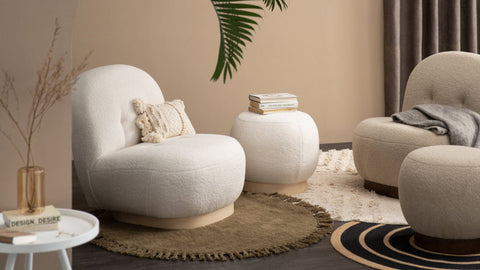When we think of furniture, we often think of function—chairs to sit on, tables to eat at, beds to sleep in. But look a little closer, and you’ll find something deeper: memory, identity, belonging. Furniture isn’t just made of wood, stone, or fabric—it’s made of emotion.
In fact, few objects in our lives hold more meaning than the ones we choose to live with every day.
The Invisible Story in Every Piece
Think about your favorite chair. It may be the place where you rocked your newborn to sleep, curled up during a storm, or had a difficult conversation. Now imagine your dining table. Maybe it hosted birthdays, quiet dinners, or Sunday mornings filled with laughter and coffee.
These pieces aren’t just furniture. They are the stage upon which life happens.
Every item we bring into our home becomes part of our story—holding the energy, habits, and emotions of the lives we lead around them.
Why Women Feel the Connection More Deeply
Women, in particular, tend to connect emotionally with furniture, and this is deeply rooted in psychology and culture. The home is often a woman’s sanctuary, a reflection of her identity and her care for others. When she chooses a sofa or a cabinet, she’s not just picking something that “looks nice.” She’s picking something that feels right.
She’s nesting. She’s designing a space that nurtures, calms, and communicates love—whether for her children, her partner, or herself.
That’s why a table isn’t just a table. It’s a space of gathering. A bed isn’t just for rest—it’s where trust is built. A console table by the door isn’t just decorative—it welcomes.
Design Choices Are Emotional Choices
There’s a reason natural textures, curved shapes, soft leathers, and warm woods are so appealing. They don’t just please the eye—they soothe the nervous system. Materials that age gracefully, like walnut wood or full top-grain leather, offer a sense of permanence in a fast-changing world. Soft corners feel safer. Organic shapes feel more human.
At Luxana Home, we design with this emotional intelligence in mind. We believe furniture should do more than function—it should feel. It should carry a mood, a memory, a meaning.
Furniture Is a Language of Love
For many people—especially women—furniture is part of their emotional language. It's how they show care: arranging the cushions before guests arrive, placing the softest throw on the sofa, or choosing a side table simply because it makes the room feel balanced.
And like all forms of emotional expression, it's deeply personal.
That’s why when someone finds the right piece, they often say, “This feels like me.”
The Takeaway
Furniture isn’t just about style. It’s about who we are and how we want to live. It tells our story, holds our experiences, and supports us—physically and emotionally.
So next time you choose a chair, a table, or a lamp, remember: you’re not just decorating a room. You’re designing a life.



Comments (0)
There are no comments for this article. Be the first one to leave a message!